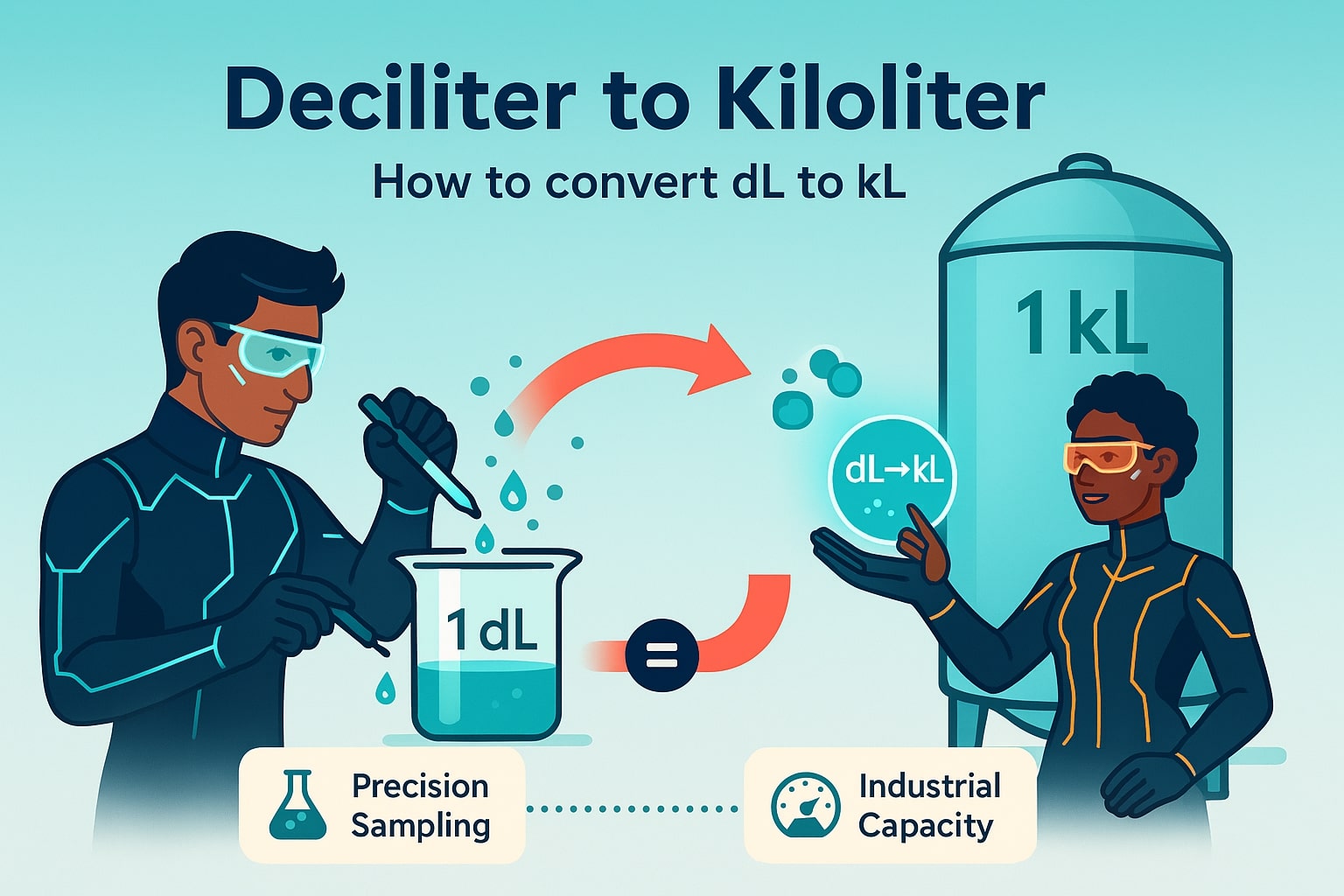Deciliter to Kiloliter – How to convert dL to kL
Need to change deciliter to kiloliter? While both are metric units, they measure volumes at totally different scales. One shows up in recipes and nutrition labels, the other in water reservoirs, fuel depots, and industrial settings. Thankfully, converting between them is just a matter of shifting the decimal point. Below, we’ll explain how to do the math, show where these units show up in real life, and even share a few fun facts to put the scale difference into perspective.

What is a deciliter (dL)?
A deciliter equals 0.1 liters, or one-tenth of a liter. It’s a unit you’ll often see in European cookbooks, drink recipes, and product packaging. Instead of listing 100 milliliters, a recipe might call for 1 dL of milk – it’s cleaner, and easier to read when scaling portions up or down.
Because it’s so close to everyday measurements, the deciliter works best in kitchens, bars, and smaller consumer-facing contexts.
What is a kiloliter (kL)?
A kiloliter is on the opposite end of the spectrum, equal to 1,000 liters. It’s commonly used in industries that need to measure massive amounts of liquid, like water utilities, fuel storage, or large-scale agriculture.
For example, residential water bills in countries like Australia and South Africa are often measured in kiloliters, since it’s easier to communicate a household’s monthly use as “12 kL” instead of “12,000 liters.”
How to convert deciliter to kiloliter
Since both units are based on liters, converting between them is simple:
1 kiloliter = 10,000 deciliters (1 kL = 10,000 dL)
To convert:
Kiloliters (kL) = Deciliters (dL) ÷ 10,000
Example: If a food processor handles 250,000 dL of liquid ingredients per month:
250,000 ÷ 10,000 = 25 kL
Rather skip the division? Use our Volume Converter or browse other Conversion tools for quick results without manual math.
Did you know?
-
A typical bottle of soda (500 mL) holds 5 dL, meaning it would take 200,000 bottles to equal just 1 kL.
-
The average residential swimming pool contains around 40 kL of water, which equals 400,000 dL – or 80,000 two-liter bottles.
-
The world’s largest wine barrel, in Heidelberg, Germany, can hold 219,000 liters – that’s 21.9 kL or a staggering 219 million dL.
-
Some breweries produce over 1 million kL of beer annually, which equals 10 billion dL, making deciliter-scale measurements impractical for production but perfect for labeling.
From Recipe Books to Water Plants: Why Both Units Matter
Though they seem worlds apart, deciliter and kiloliter coexist in industries where products move from small-scale consumption to large-scale production. Historical trade records from the International Organization of Legal Metrology note that as metric standards spread in the 20th century, kiloliters became the default for logistics and infrastructure, while deciliters remained common on product packaging and in homes.
This balance helps manufacturers track huge batch volumes in kL while still labeling products in sizes consumers can understand, like dL, mL, or L. The two units make it easy to navigate from factory to kitchen without confusion.

Wrapping It Up
Converting deciliter to kiloliter is easy: just divide by 10,000. Whether you’re managing household recipes, municipal water supplies, or industrial liquid storage, this conversion helps keep the math clear and consistent.
For instant, accurate results, use our Volume Converter or explore other Conversion tools to make every conversion effortless.

